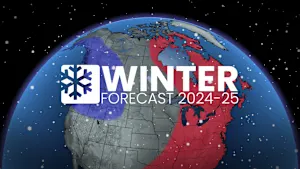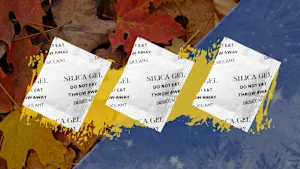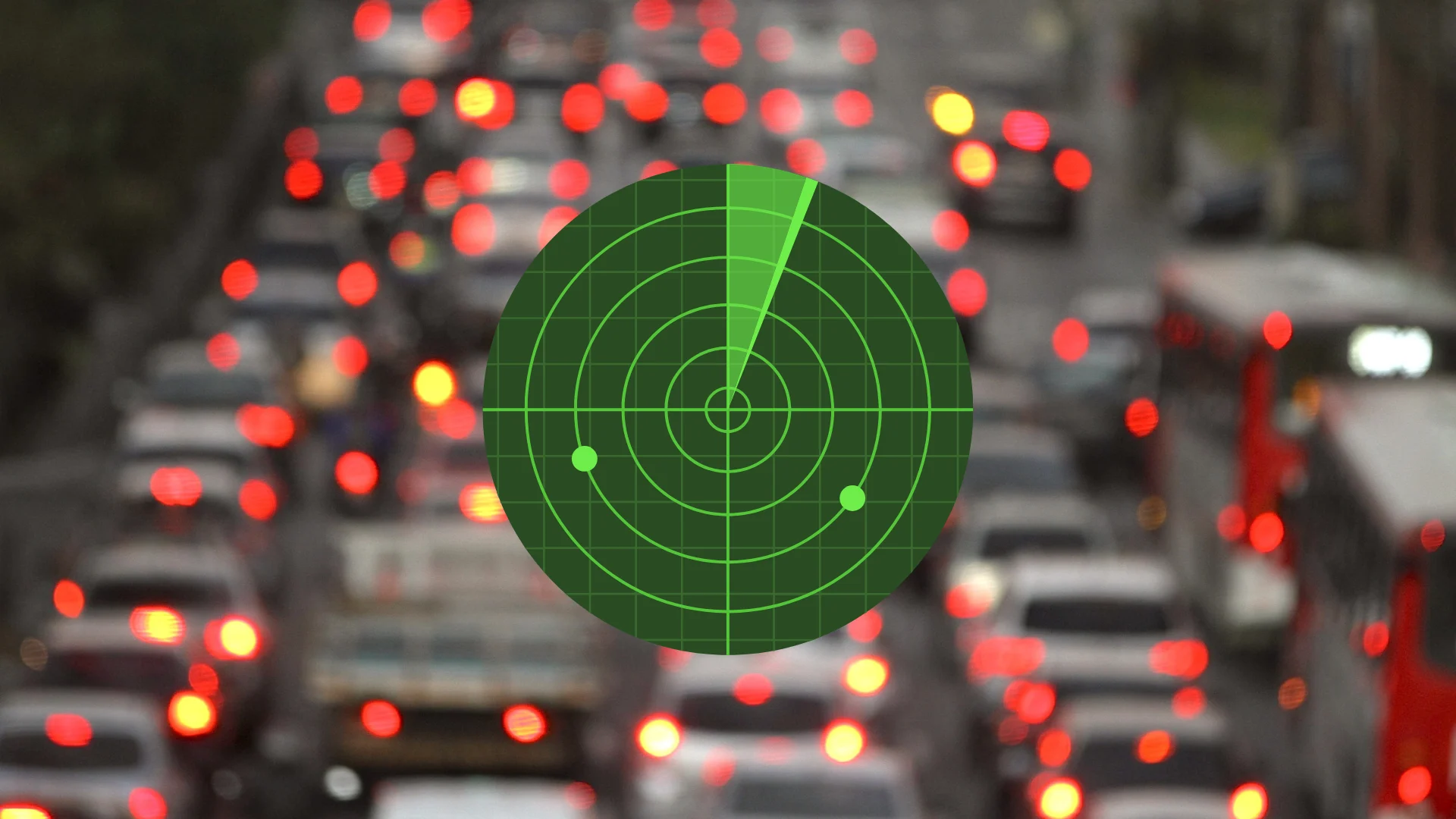
Doppler radar can actually ‘see’ highway traffic on cold mornings
Conditions are sometimes right to allow weather radar to detect highway traffic dozens of kilometres away
Radar is one of the most useful tools for scanning our skies above. Sometimes, though, things that normally slide under the radar show up in full view on cold mornings.
Did you know it’s possible for weather radar to ‘see’ traffic on a busy highway? This bizarre phenomenon is especially common on cold mornings.
DON'T MISS: The technology that can spot hidden tornadoes lurking in storms
Modern weather radar works by sending a beam of microwave energy out into the atmosphere. These beams are angled slightly above the surface so they gain altitude as they travel farther away from the dish.
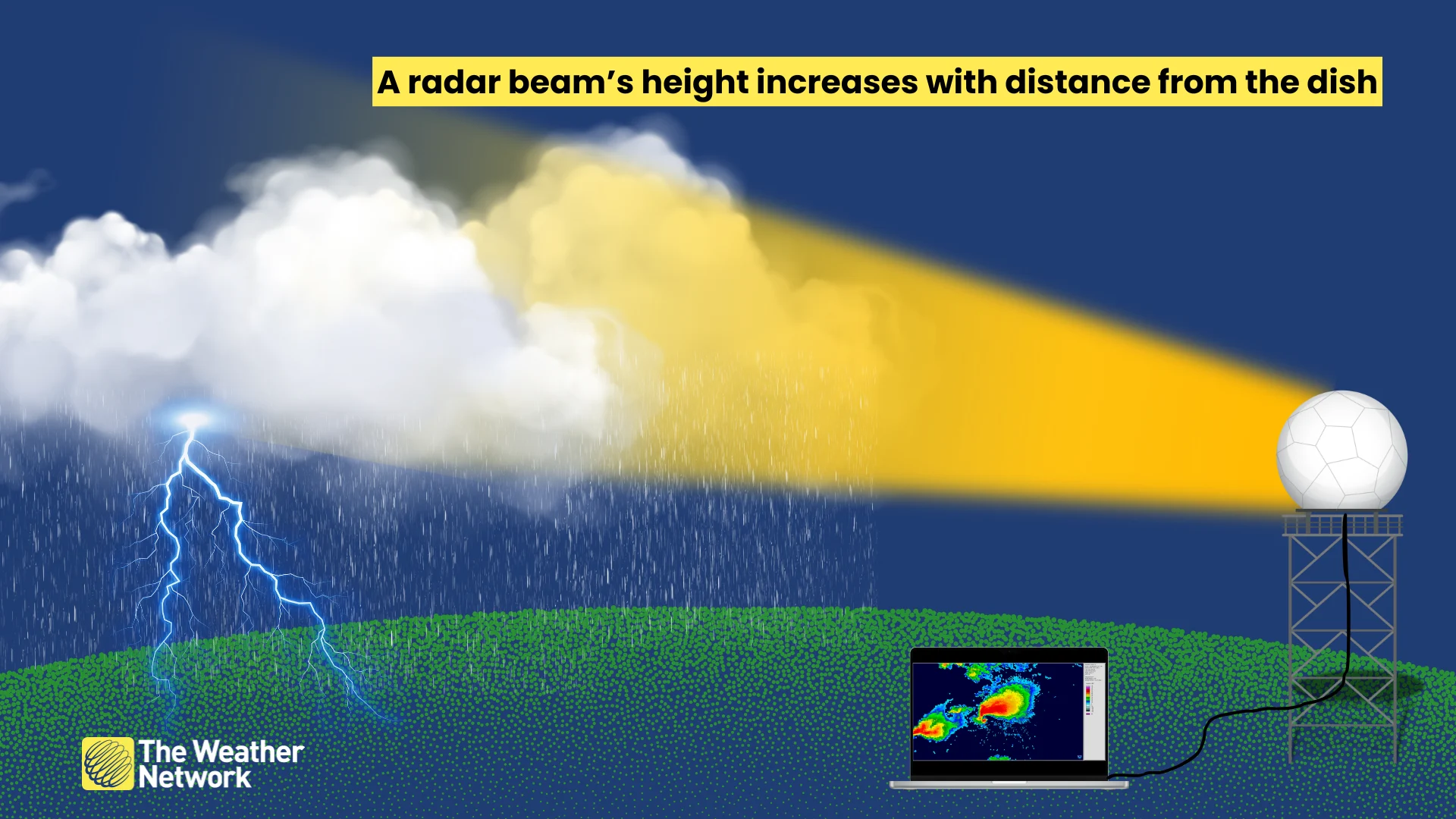
These harmless microwaves run into objects like raindrops, snowflakes, and hailstones as the beam soars through the atmosphere. A little bit of that energy reflects off those objects on impact and returns to the radar dish.
The radar then calculates how much energy returned and how long it took to reflect back to the dish, allowing us to see the location, intensity, and movement of precipitation.
Sometimes, though, that radar beam can move in unexpected directions thanks to layers of warm air lurking just above the surface.
RELATED: Advanced technology is powering next-level weather forecasts
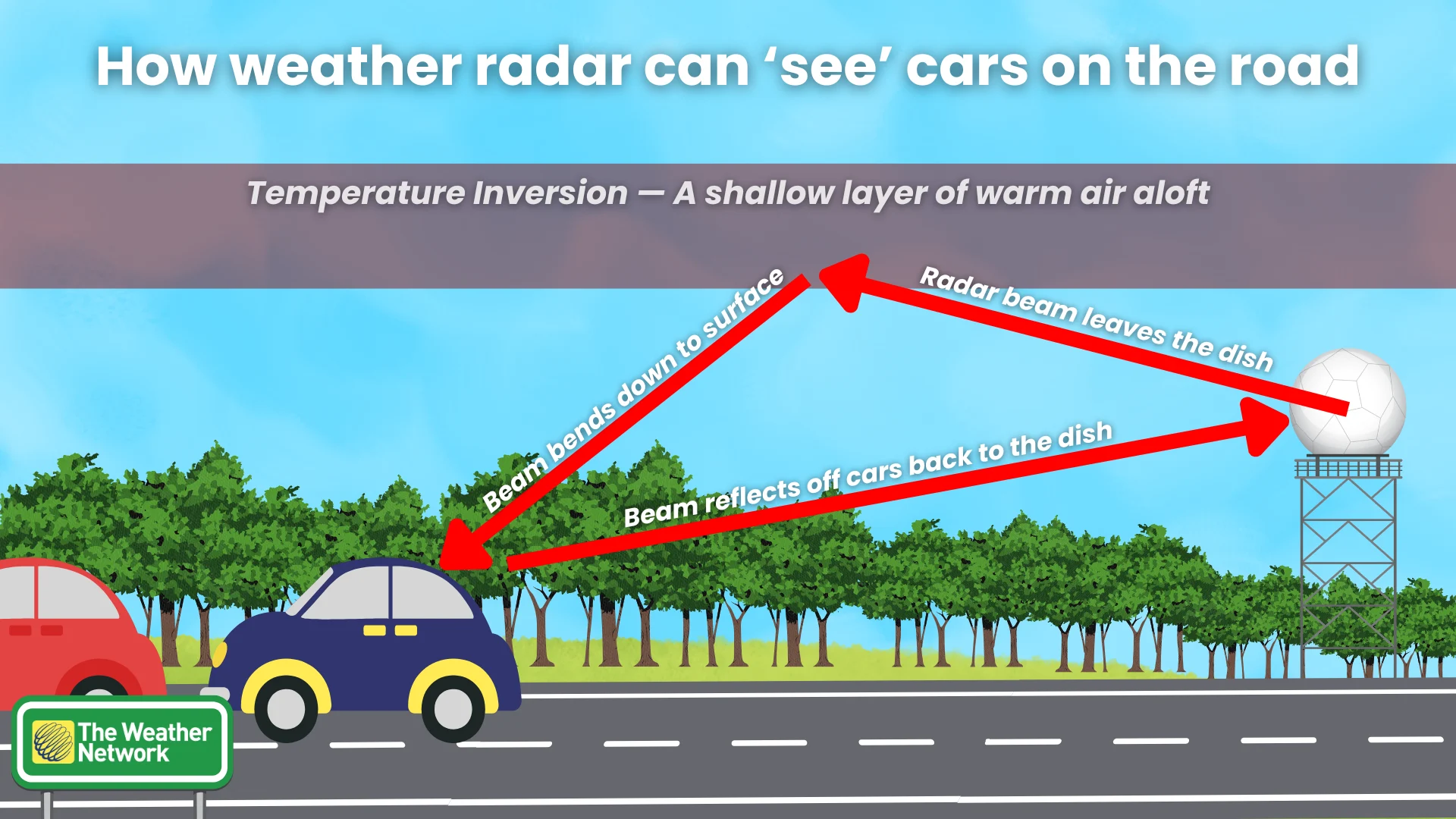
Temperature inversions are a frequent feature in the atmosphere on cold days. An inversion occurs when a layer of warm air gets wedged above a layer of colder air below.
The density difference between colder air below and warmer air above can cause the radar beam to bend back toward the ground.
When this happens, the beam can bounce off objects on the ground and make it appear as if the radar is detecting rain. If everything lines up just right, this process allows us to track heavy highway traffic using weather radar.

Take a look at the above radar image from Memphis, Tennessee, back in May 2019. A strong temperature inversion over the Mississippi River Valley forced the radar beam to bend back toward the surface.
Interstate 40 is aligned perfectly with the beam so that the radar ‘saw’ heavy traffic on the highway about 65 kilometres away from the radar site.
Why does the radar pick up cars so well and not, say, trees or houses? Shinier objects like vehicles are more effective at reflecting the radar beam back to the dish.






